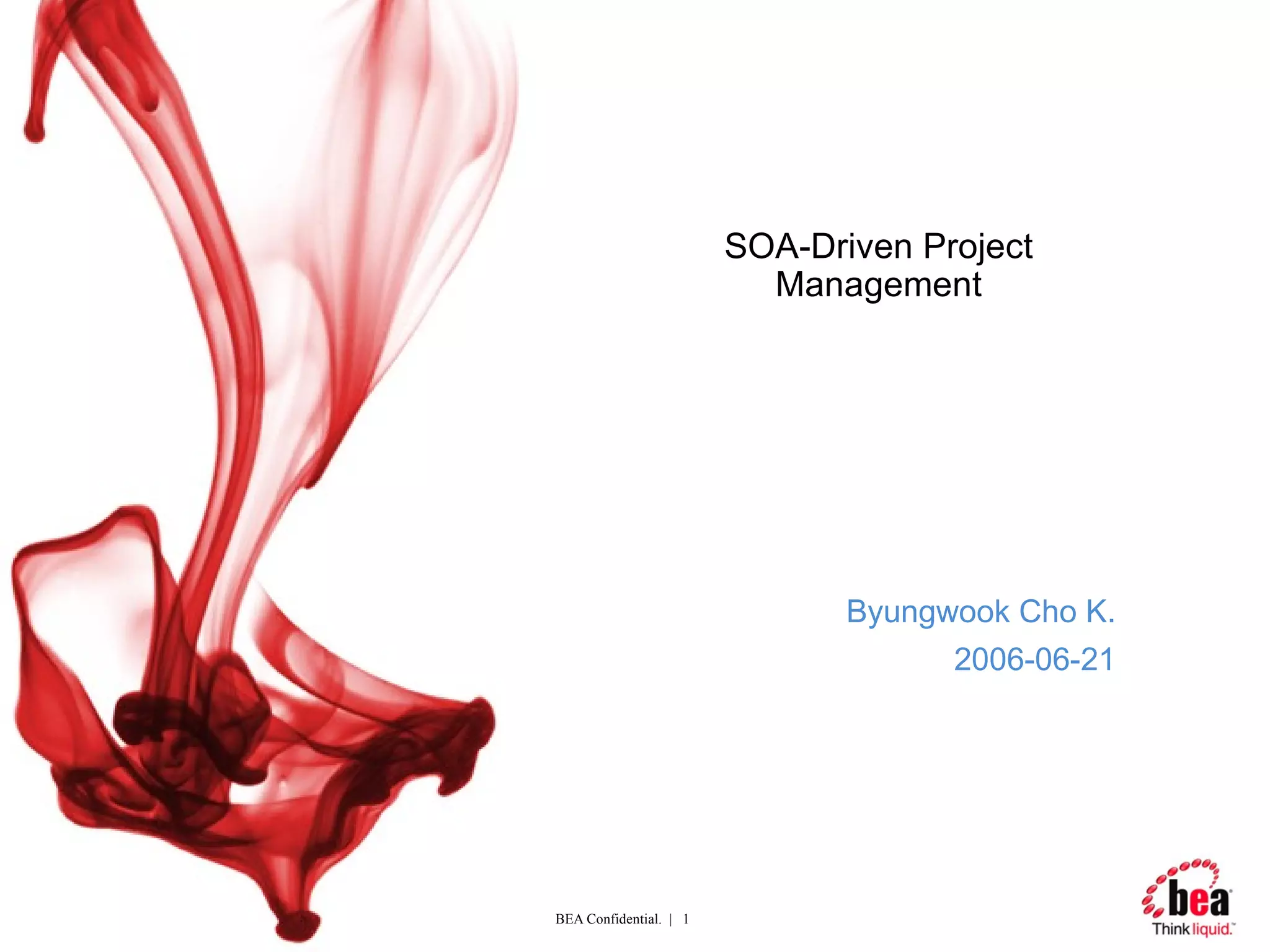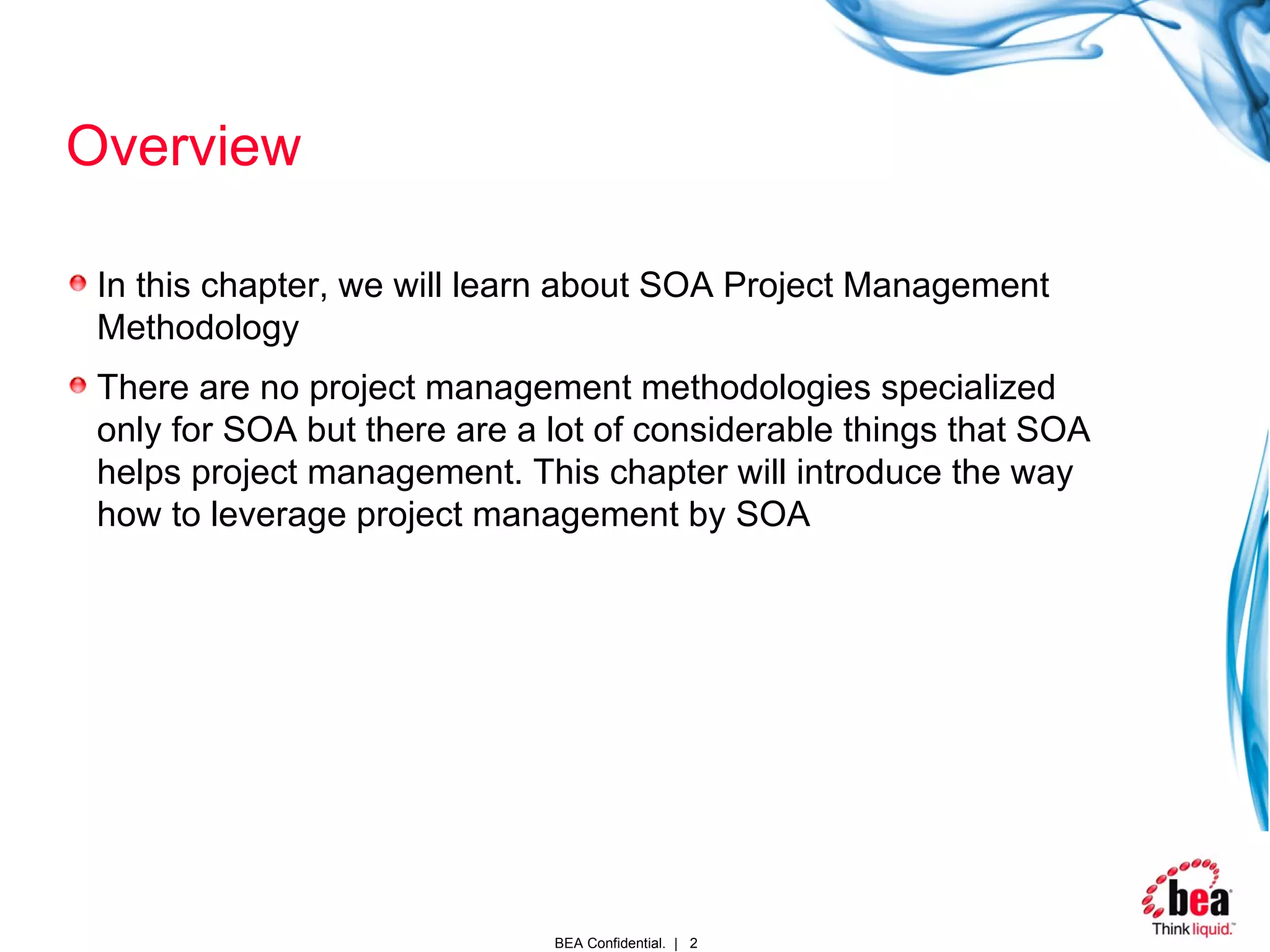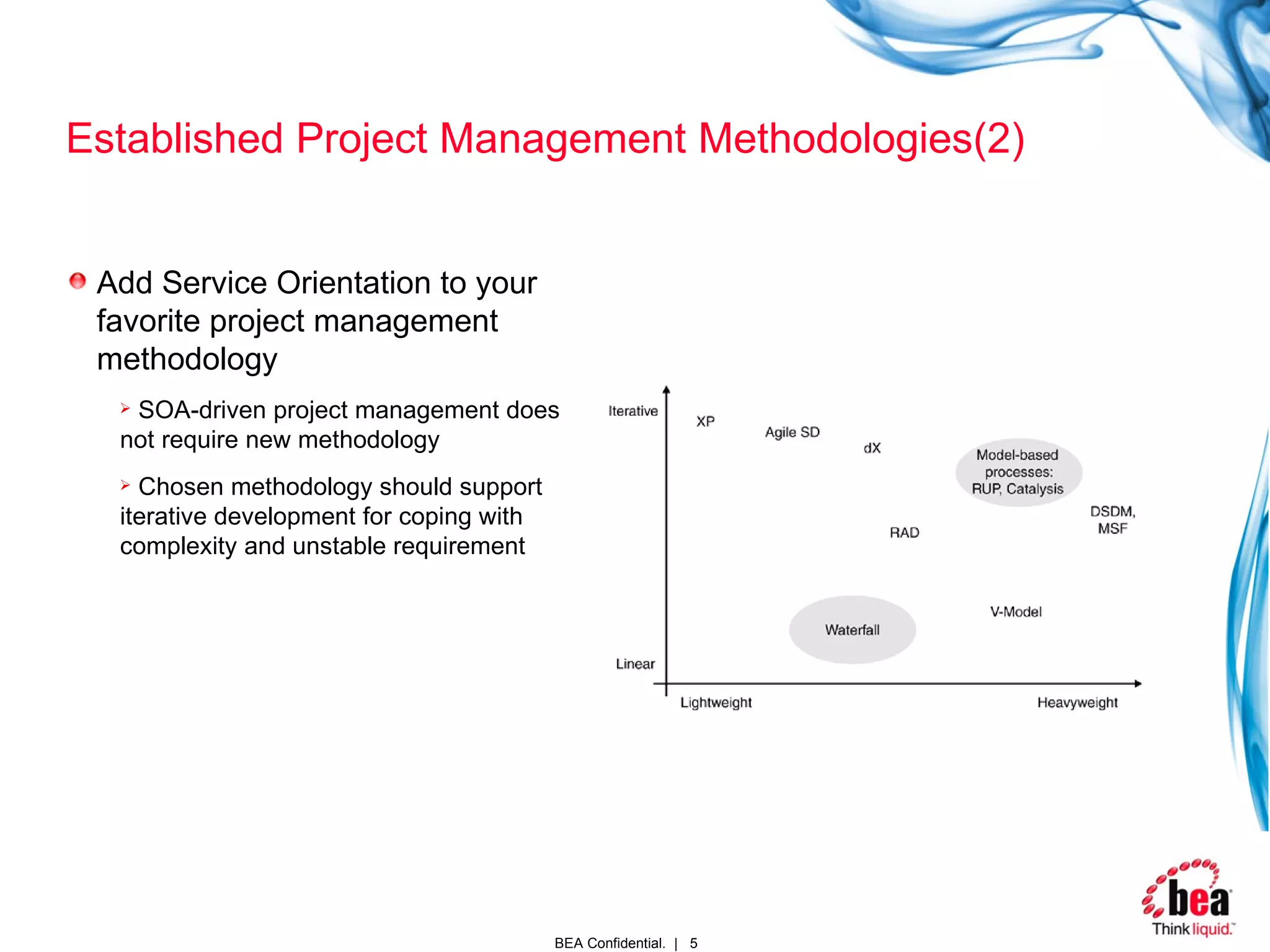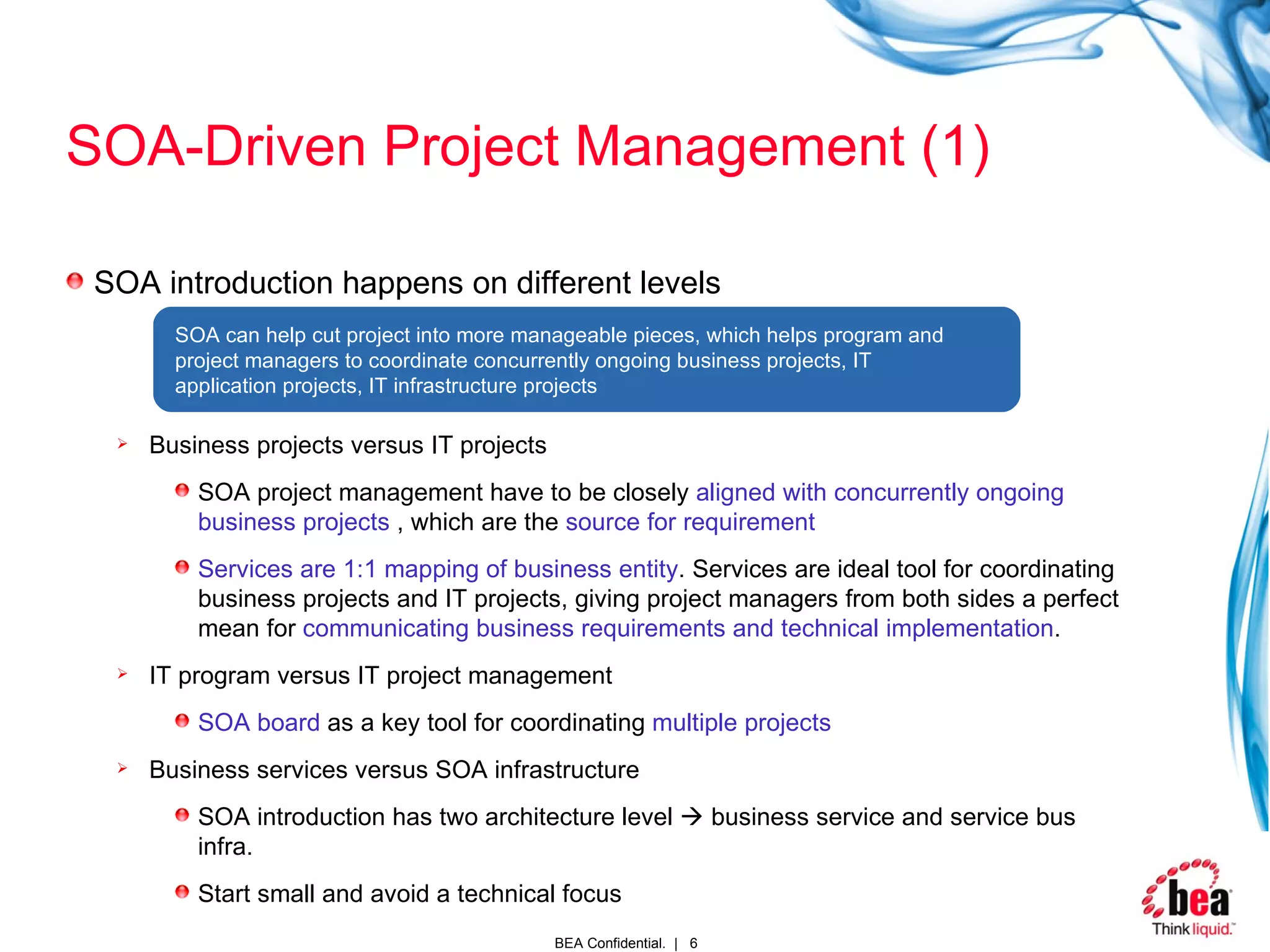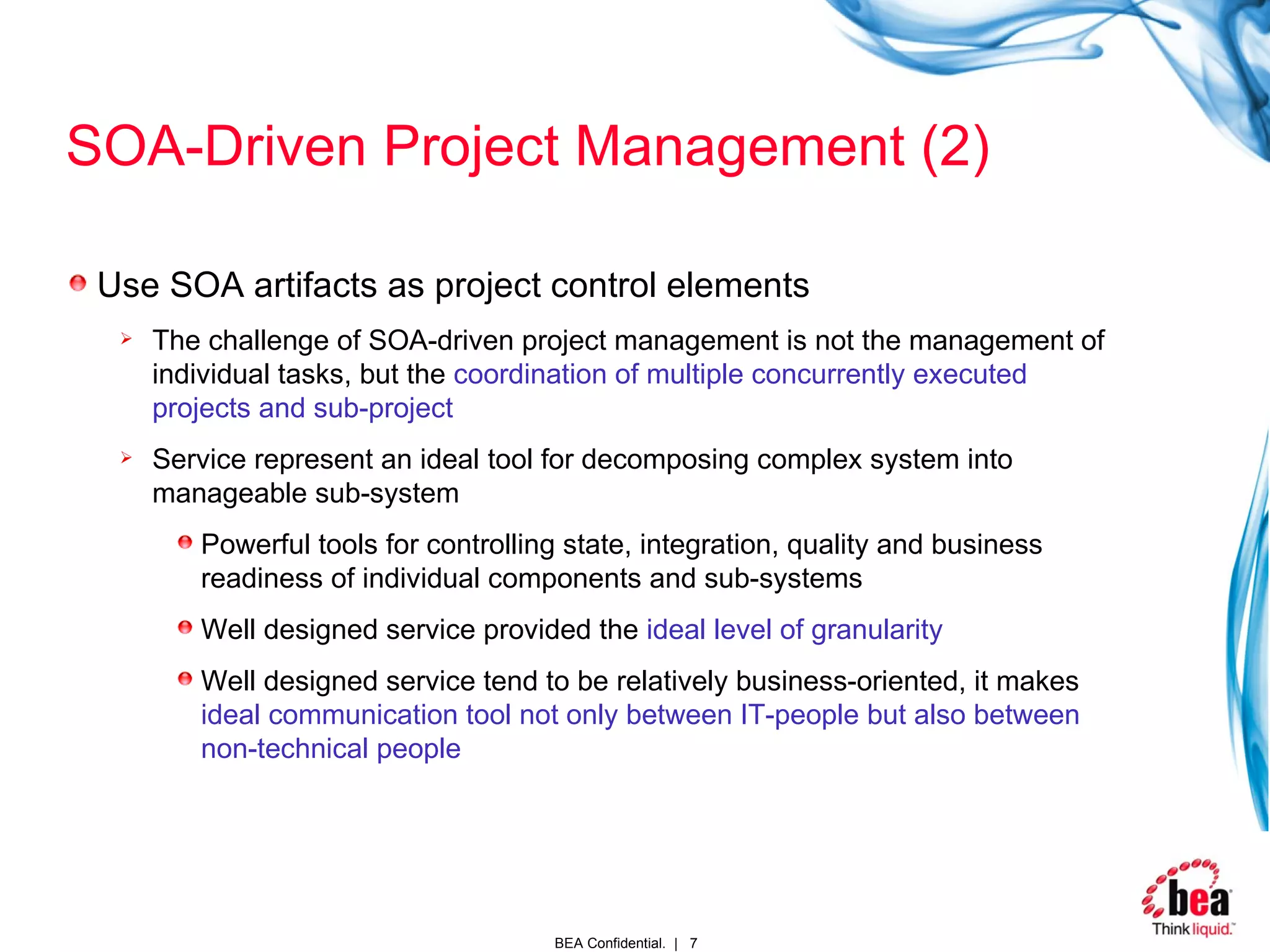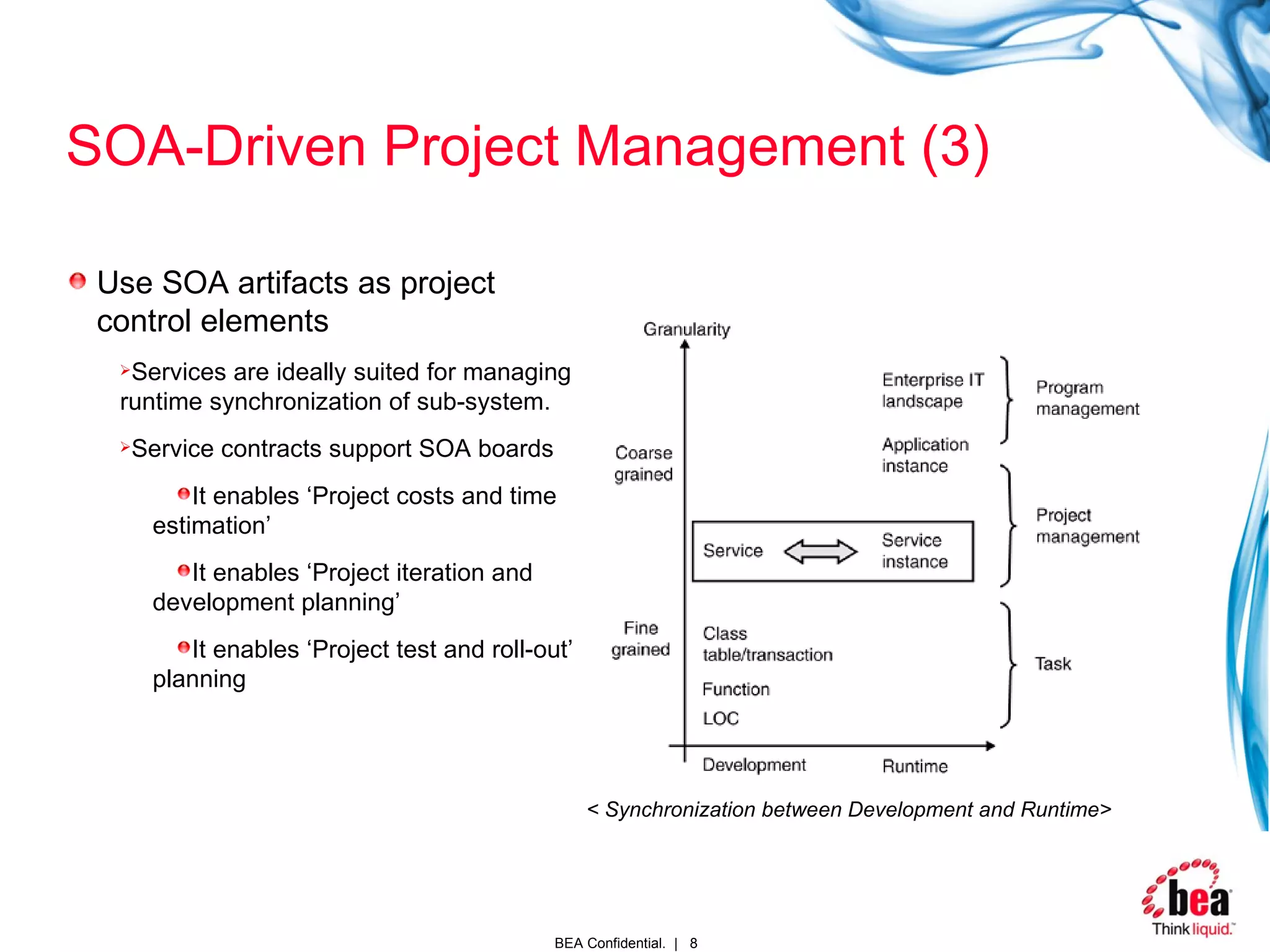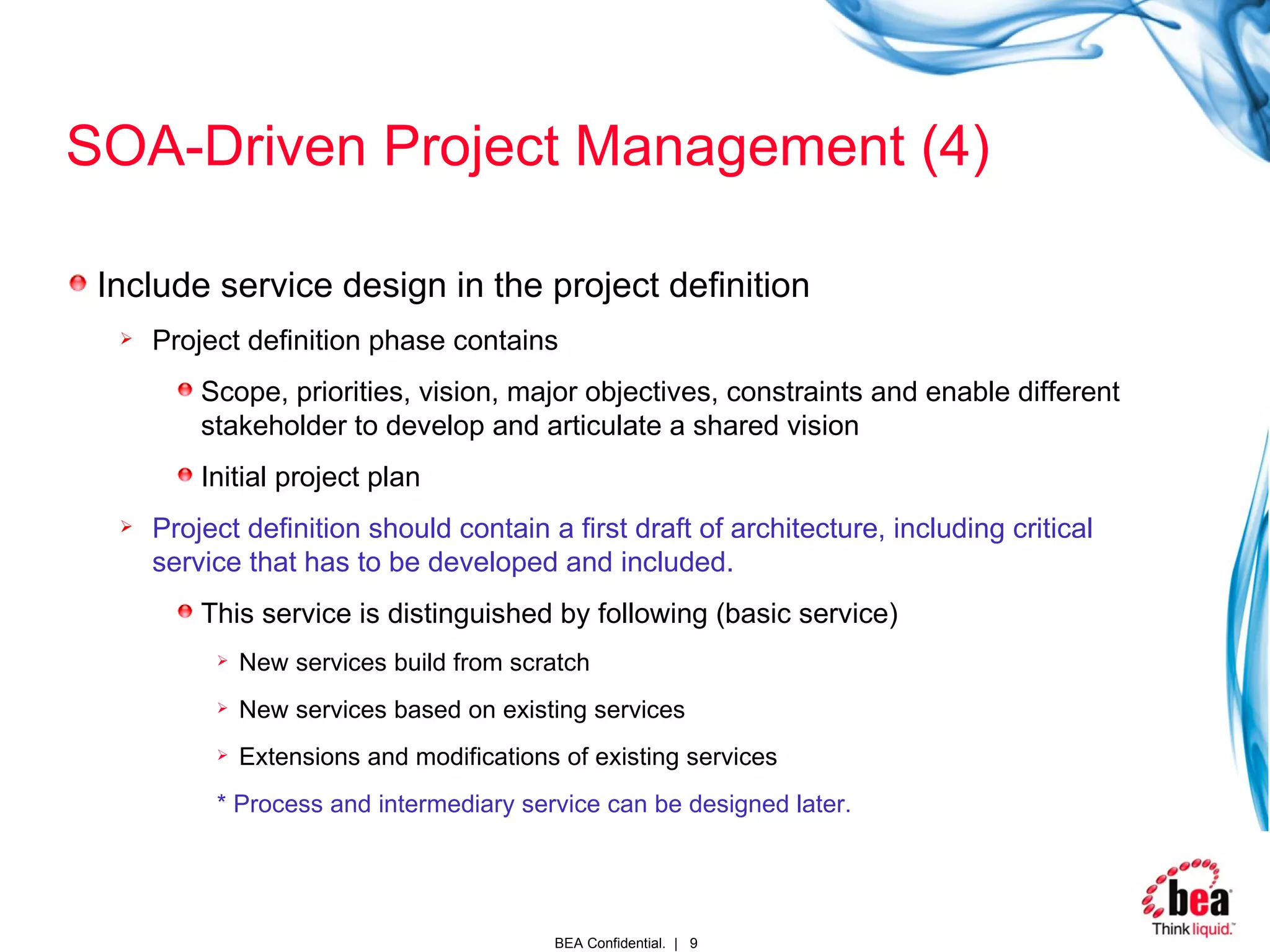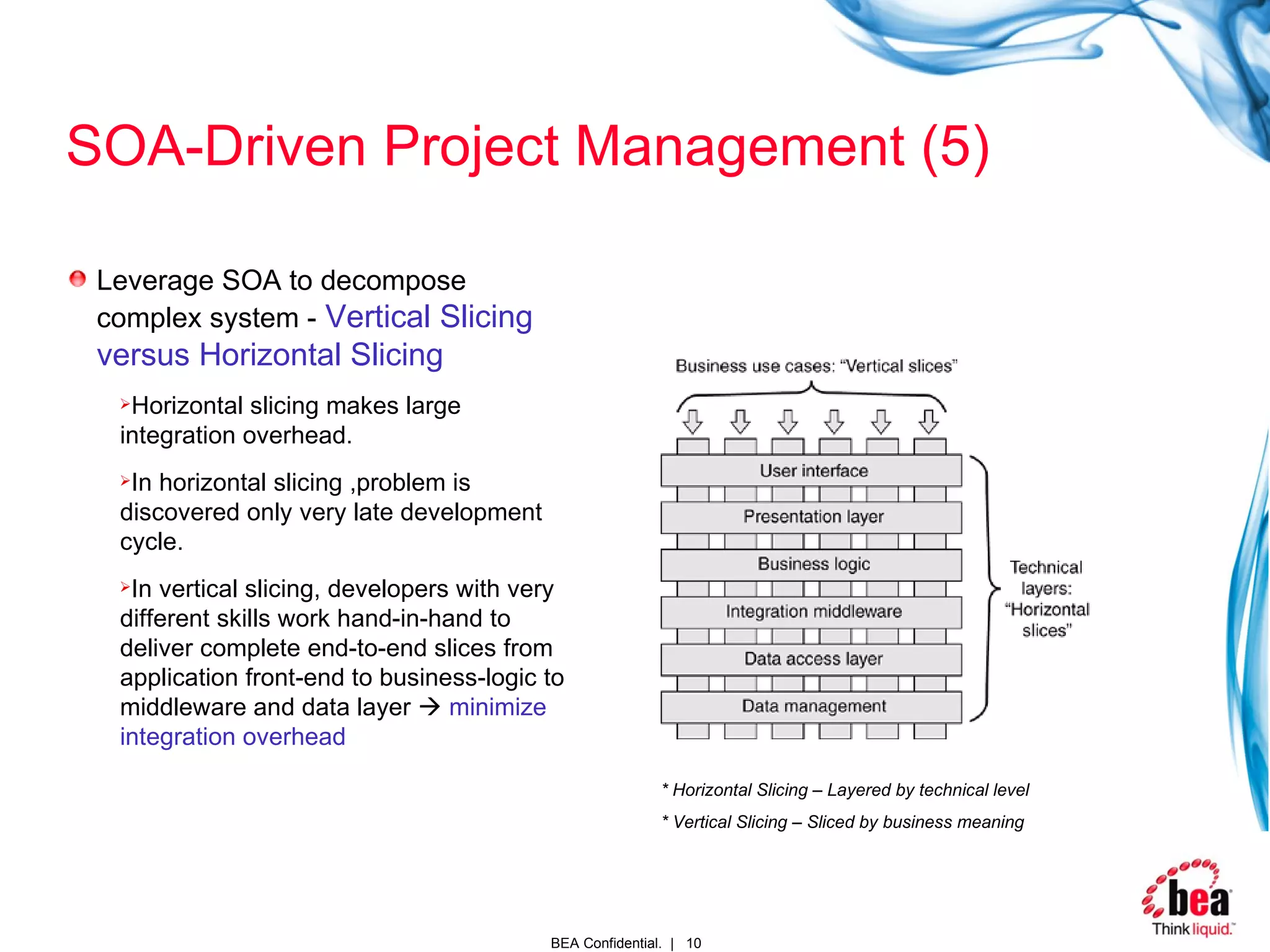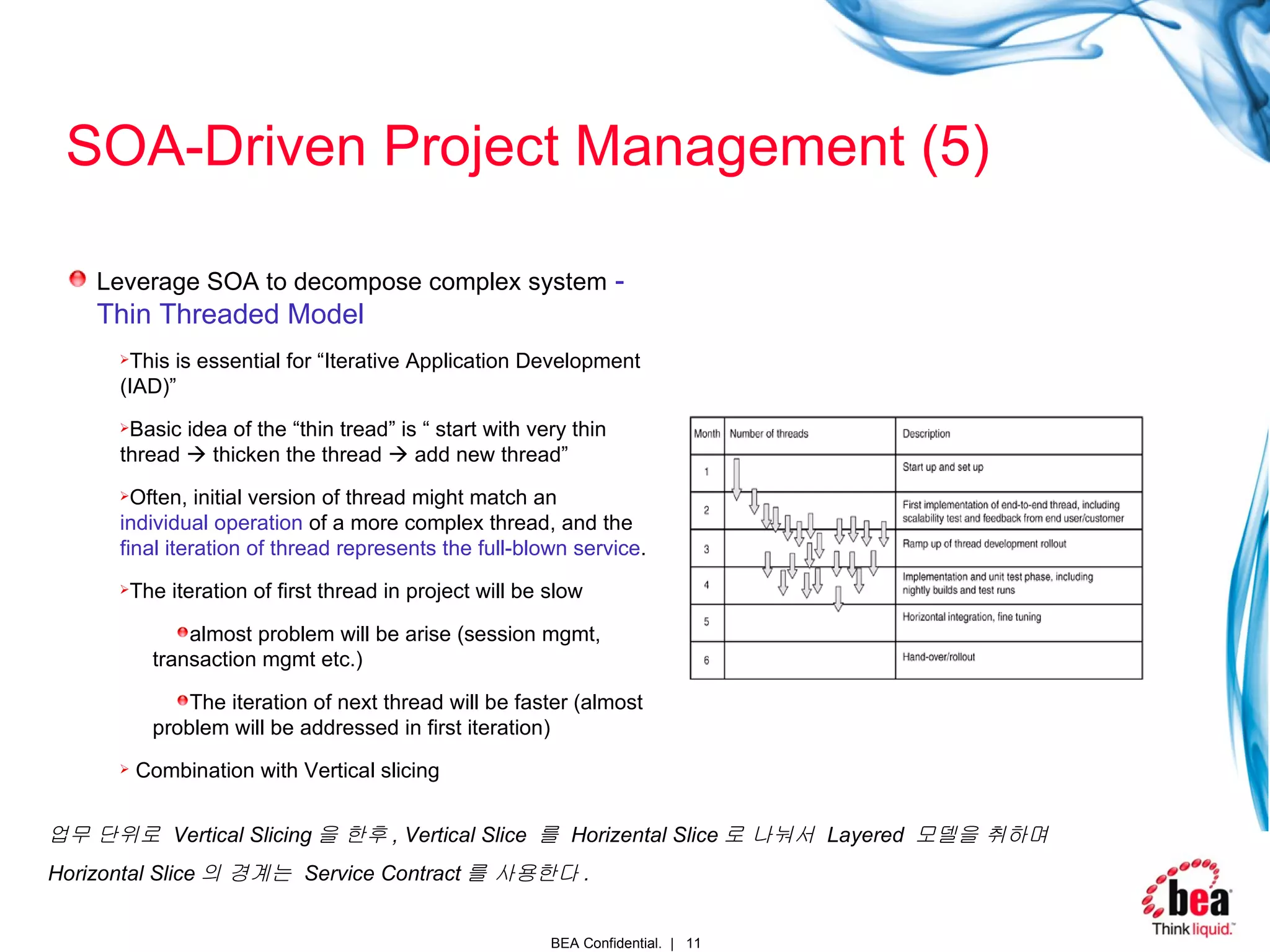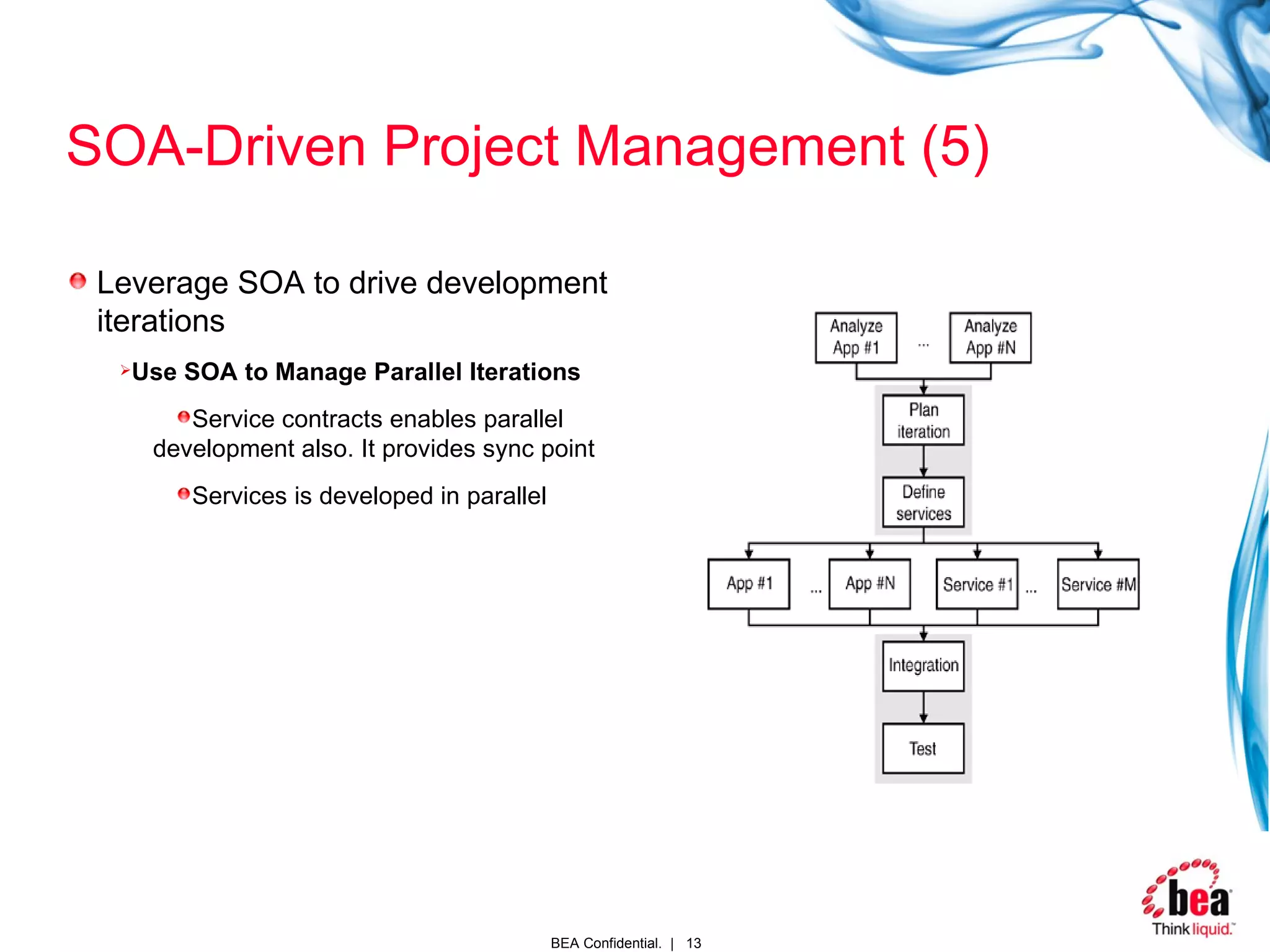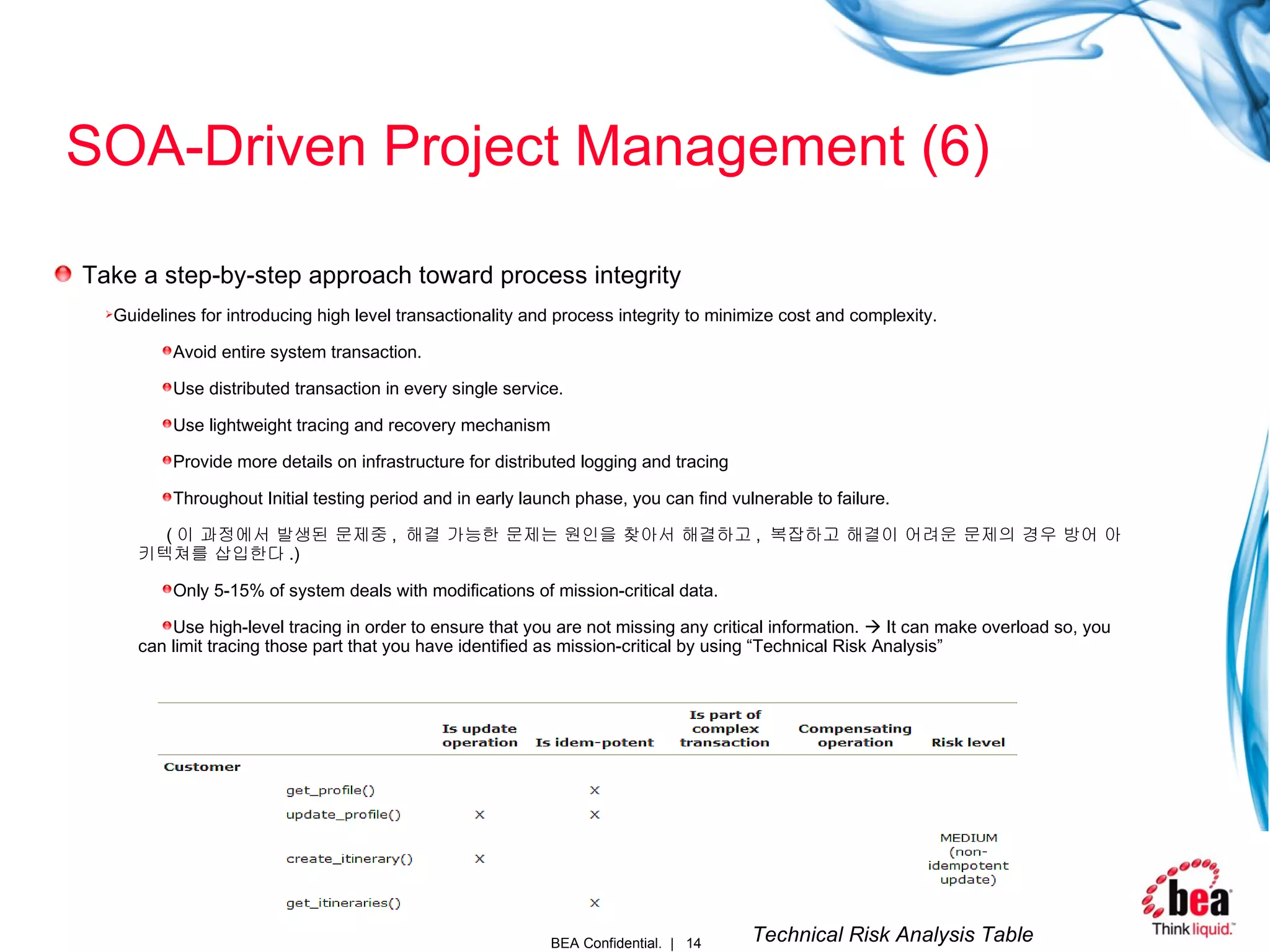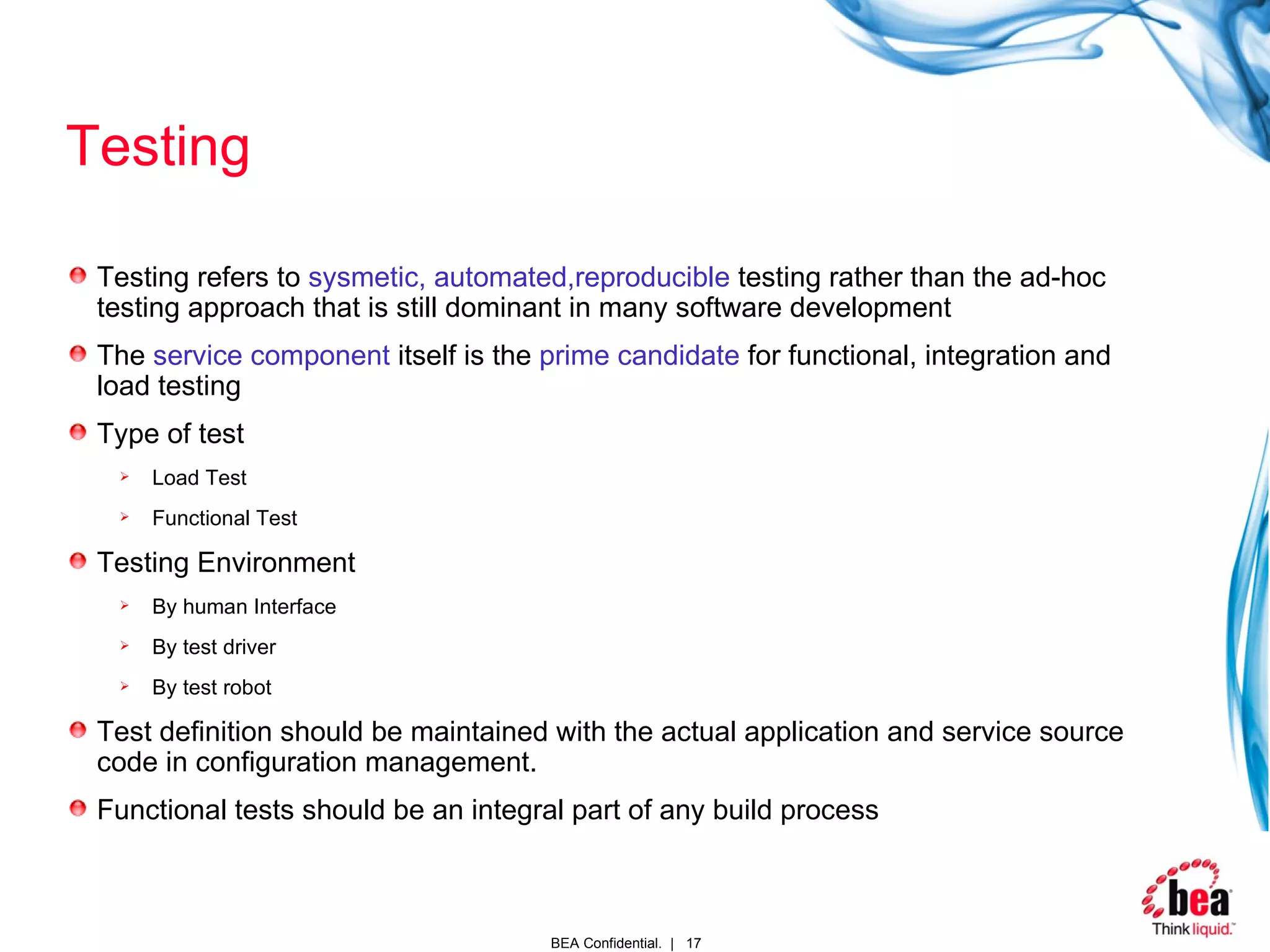This document discusses project management methodologies for service-oriented architecture (SOA) projects. It introduces established project management approaches and how SOA can be integrated. Key points of SOA-driven project management discussed include using SOA artifacts for control, leveraging SOA to decompose projects, and an iterative development approach using service contracts. It also covers configuration management and testing considerations for SOA projects.
